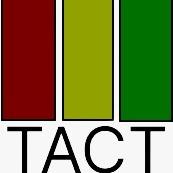TACT - Triage Assessment and classification Tool
Our project focusses on prioritizing patient care & treatment during Mass casuality by detecting vitals of patient using automated sensor based system & categorize them into Red/Yellow/Green category.
Created on 5th November 2023
•
TACT - Triage Assessment and classification Tool
Our project focusses on prioritizing patient care & treatment during Mass casuality by detecting vitals of patient using automated sensor based system & categorize them into Red/Yellow/Green category.
The problem TACT - Triage Assessment and classification Tool solves
Triage classification is a technique used by healthcare professionals, in case of mass casualities to categorize patients based on the severity of their condition, ensuring timely and appropriate treatment, potentially saving numerous lives. However, the manual triage process typically takes 2-5 minutes per patient. Our aim is to AUTOMATE this process, significantly reducing the necessary time. This is especially critical in time-sensitive situations where prompt action is vital and can lead to both lives saved and a reduction in required workforce. We have implemented a deep learning model for patient classification into three seriousness levels. Additionally, we intend to incorporate photoplethysmography, which involves using RGB cameras to measure heart rate. A detailed explanation of this methodology is provided in the attached documentation.
Challenges we ran into
Our project encountered various challenges:-
Dataset- The initial dataset contained data for approximately 500,000 individuals across 927 parameters, resulting in an excessively large file size that strained our systems. To address this, we employed innovative techniques, including converting the dataset from a CSV file to an R file and reducing the dataset's size by omitting certain parameters and limiting the dataset to 100,000 individuals.
Photo-plethysmography -Due to the unavailability of the necessary RGB hardware setup, we had to adopt a new technology, namely, Photo-plethysmography.
Front end- To maintain the uniqueness and interface of our website.
Technologies used
